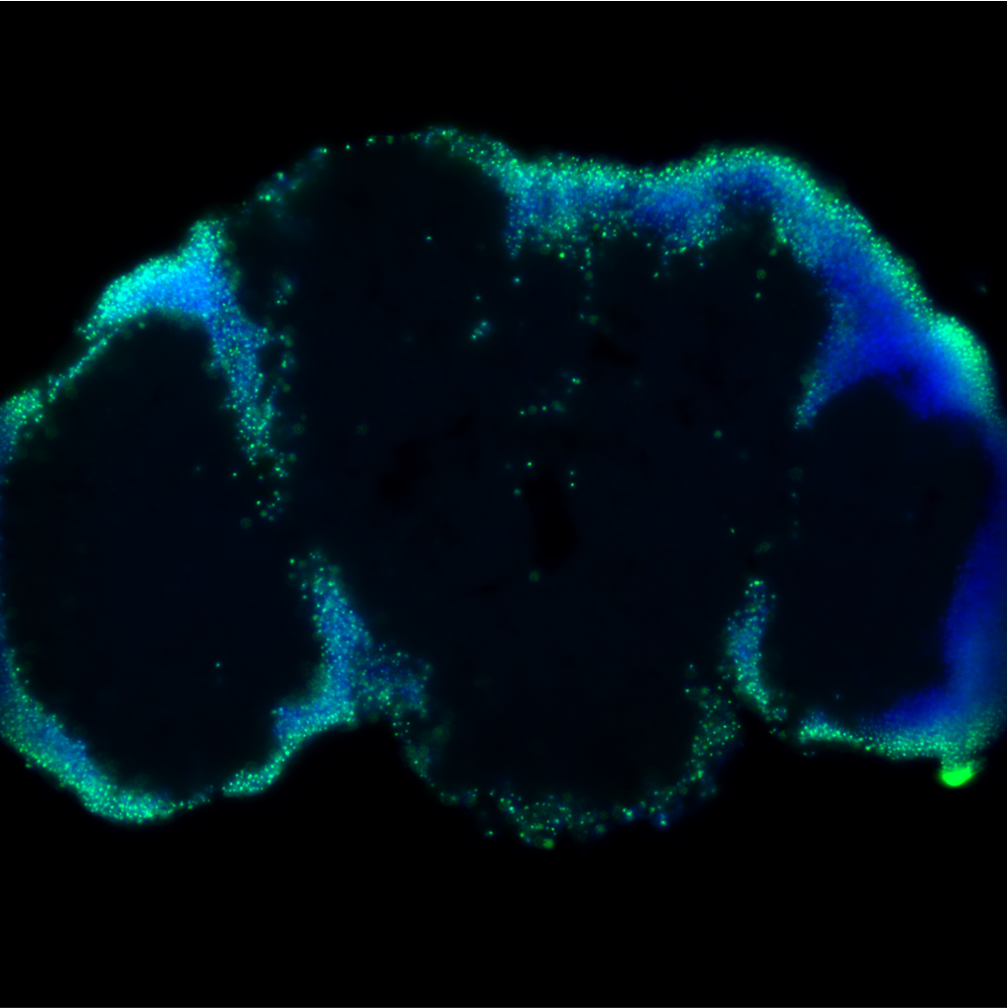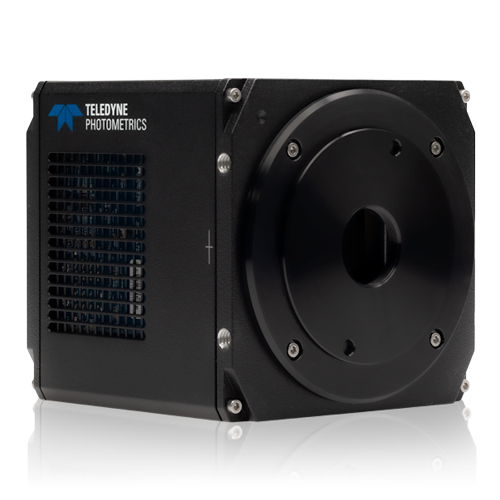Whole Brain Super-Resolution 3D FISH
Dr. Marcelo Nollmann, Dr. Jean-Bernard Fiche
Centre for Structural Biochemistry, INSERM/CNRS, University of Montpellier, France
Background
Dr. Marcelo Nollmann leads a research group at the Centre national de la recherche scientifique (CNRS) in Montpellier, where his group aims to develop single-molecule and advanced microscopy methodologies to understand the mechanisms underlying DNA organisation and transcription in multi-cellular organisms.
Research engineer Dr. Jean-Bernard Fiche told us about the Nollmann Lab, “We are interested in understanding exactly how gene transcription is controlled by enhancers. We target specific chromatin zones around genes and acquire images to measure the 3D position of each target in each single cell, so we can trace the path of chromatin in 3D. We named this innovative technology Hi-M.”
“One of our projects involves regulation of transcription in the Drosophila brain. We need to have precise 3D information from each cell to retrace the path of chromatin and see how it is folded along a specific targeted position in the gene.”

Figure 1:A 10 µm cryosection of an adult Drosophila melanogaster fly brain (4-5 days old). Nuclei are stained with DAPI (blue) and satellites regions of the genome are labelled with AF488 (green). Satellite images are acquired during every experimental cycle and are used for registration during analysis. All images were acquired with the Kinetix in Full Frame using epifluorescence illumination. Pixel size is 109 nm.
Challenge
Dr. Fiche explained some of the imaging challenges they face in their research, “For our Drosophila project we want to image the whole brain, and for each round of acquisition we are imaging one or several targets in each cell nuclei, indicating the positions of the targeted DNA sequences. We need to measure its position in 3D with nanometre precision.”
Dr. Nollmann further described this imaging application, “The throughput of our Hi-M experiments is to a large extent defined by the area we can image for each field of view. Therefore, the increase in imaging area and the acquisition speed afforded by our Kinetix camera allowed us to increase our throughput over two fold."
"The reliability of our Hi-M analyses depend on the localization precision for each target. Therefore, using a camera with a large field of view, but also with high sensitivity is paramount. We design our own acquisition software, qudi-Hi-M, therefore the availability of a reliable and easy to use python package to control the camera was critical for us."
[The Kinetix] is a very good product. Compared to our previous sCMOS camera, the field of view is larger and combined with a very good sensitivity, it is perfectly adapted to our experiments.
Dr. Jean-Bernard Fiche
Solution
The Kinetix is the ideal solution for this application, featuring a previously unheard of combination of specifications. With a large 29.4 mm sensor the Kinetix can image across the entire Drosophila brain samples, and combined with 6.5 µm pixels can obtain sub-cellular resolution across this range. Low signals are no longer an issue, thanks to the combination of high peak 95% quantum efficiency across a broad range from UV-NIR, and sub-electron read noise levels. The Kinetix is also capable of very high speed imaging, and when combined with the large sensor results in a high throughput solution, running imaging experiments far more efficiently than typical sCMOS cameras.
Dr. Fiche shared his experience with the Kinetix sCMOS camera, “Honestly, it’s a very good product, all the PhD students, postdocs or PI are happy with it. Compared to our previous sCMOS camera, the field of view is larger and combined with a very good sensitivity, it is perfectly adapted to our experiments.”
The Kinetix is run through Teledyne Photometrics’ PVCAM driver, and we also supply a SDK and python wrapper for those who want to develop custom software scripts, “We developed our own Python software for controlling the Kinetix using the SDK and PyVCAM. I’ve developed software for other cameras and sometimes it can be buggy, but with the Kinetix it is not.”
